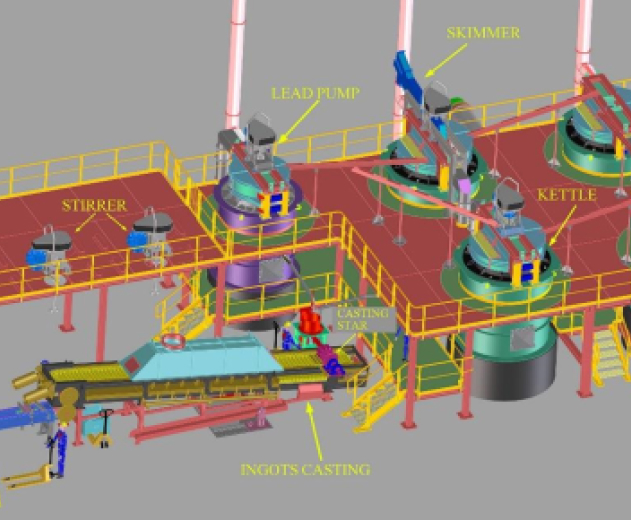1. Breaking of Scrap Batteries
2. Foundry Section for Smelting of Lead Metal
3. Refining & Alloying
4. Casting of Finished Lead

The process is based on a wet classification of the crushed scrap batteries with the scope to separate the components into different materials and by-products.

The foundry’s scope is to provide a line to melt and cast grids/poles and lead paste using a specified temperature. This is done by melting the lead products in the Rotary Furnace and Refining the bullion metal into kettles keeping the exhaust’s gas under the admitted limits. The finished product is lead bullion with 98.7% lead content approximately and the by-product is slag in blocks separately with 5 to 8% lead content approximately. The equipment making up the foundry and refinery sections is run batch-wise to produce refined lead by operating 24 hours/day.


We refine and remove impurities from metal up to its pure form 99.975%. we also add alloying elements to make the desired alloy. Once the material is ready it is casted in the form of ingots using the ingot casting machine and stacked out automatically.
IMI has five kettles, three for refined lead more than 99.975% pure, One for antimonial alloy and one for calcium alloy
At IMI casting used together with the cooling tower is alternatively used for soft, hard and alloyed lead production.

